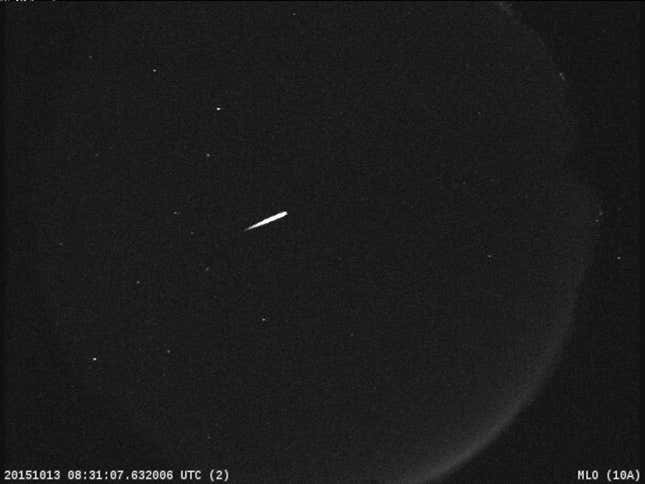The annual Orionid meteor shower, known for its bright and swift meteors, is set to peak on October 22, 2023. These meteors create a celestial display that you won’t want to miss, and our guide will prepare you for this astronomical display.
The Orionids, which peak in mid-October each year, are known for producing noticeably bright meteors that flash across the night sky.
Advertisement
About the Orionid meteor shower
Zooming at speeds in excess of 148,000 miles per hour (66 kilometers per second), these meteors have the potential to become fireballs, producing prolonged bursts of light, according to NASA. They often leave glowing “trains” in their wake, which can linger for several seconds to minutes.
Advertisement
The radiant point of this shower, that is, the location in the sky from where the meteors appear to originate, is in the constellation Orion. It’s important to note that, while constellation names help skywatchers locate meteor showers, they aren’t the actual sources of the meteors. In actuality, the meteors are tiny fragments and particles, typically from comets or asteroids, that burn up as they enter Earth’s atmosphere.

Advertisement
In the case of the Orionids, they’re bits of debris produced by Halley’s Comet, a short period comet that flies past the Sun (and by consequence Earth) every 75 to 79 years. Every time it passes the inner solar system, Halley’s nucleus sheds between 3 to 10 feet (approximately 0.9 to 3 meters) of its material, according to EarthSky.
Viewing tips for the 2023 Orionids
NASA says that, for the best viewing experience, it’s a good idea to look 45 to 90 degrees away from the radiant. “They will appear longer and more spectacular from this perspective,” the space agency explains. “If you do look directly at the radiant, you will find that the meteors will be short. This is an effect of perspective called foreshortening.”
Advertisement
The Orionids tend to be moderate in terms of meteor shower intensity, generating 15 to 20 meteors per hour at their peak when observed from locations with minimal light pollution, according to the American Meteor Society (AMS). However, there have been instances in the past when the meteor count surged to triple this number (that said, intense activity is not expected this year).
For best viewing results, the AMS recommends that you watch the meteor shower during the immediate hours after midnight (they really get going after 1:00 a.m.), with the spectacle lasting until dawn. Staying up so late is often impractical, but the Orionids are fortuitously peaking over the weekend this year. For 2023, the Orionids are expected to peak at 00:05 UTC on Sunday, October 22, or 8:05 p.m. ET on Saturday, October 21. As a whole, the meteor shower lasts from late September to late November.
Advertisement
The shower is visible from both the Northern and Southern hemispheres; in the Northern Hemisphere, viewers should face southeast, and in the Southern Hemisphere, the northeast. Needless to say, you’re best to steer clear of street lights and bright cities in general, if possible. To stay comfortable, you’ll want to bring a lawn chair or blanket, not to mention a sweater (it is October, after all) and plenty of snacks and beverages.
Insights on Halley’s Comet
Halley’s Comet, officially designated as 1P/Halley, is one of the most famous and easily recognizable comets, making an appearance in our skies approximately once every 76 years. Named after Edmond Halley, who accurately predicted its return in 1758, the comet has been observed and documented for over two millennia.
Advertisement
Halley’s Comet last graced our skies in 1986 and is scheduled to make its next appearance in 2061. The annual appearance of the Orionids, however, serves as a friendly reminder of the comet’s enduring presence. And if you miss the Orionids, don’t fret! The Eta Aquarids are a meteor shower that occurs annually, typically peaking in early May, and they’re also associated with Halley’s Comet.
Whether you’re a seasoned astronomer or a curious onlooker, the 2023 Orionid meteor shower promises a celestial spectacle that’s not to be missed. Clear skies!
Advertisement
For more spaceflight in your life, follow us on X (formerly Twitter) and bookmark Gizmodo’s dedicated Spaceflight page.
Services Marketplace – Listings, Bookings & Reviews